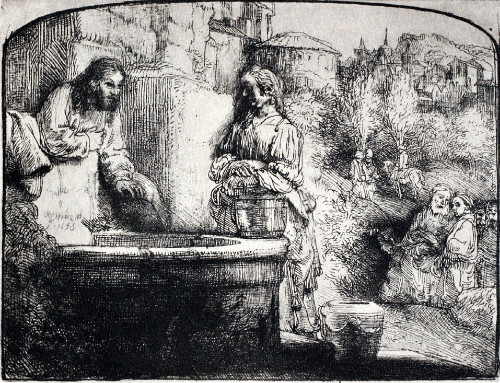Garden gifts

Here comes the Rose Post...and it's not even June. This year, I'm struck by how many of my plants are somehow gifts. This "New Dawn" climber was a gift from...me. Meaning, I actually propagated it from the original bush across the garden. My dad taught me propagation, among so many other things, so it's also sort of a gift from him. The fragrance is that of absolute innocence.

"Climbing Don Juan" gives the gift of transformation...to a corner that stood bare and ugly for years. He's exuberantly covering up the set built by NBC for a "Law & Order" episode about a Mad Bomber, a.k.a. our garage.

"Perle D'Or" was dug up from the Brooklyn Botanic Garden's Cranford Rose Garden and handed to me by their legendary rosarian, Stephen Scanniello. The garden was about to be renovated, and the bushes were being handed out to staff and volunteers. The buds really do look like golden pearls.

The gift of this lavender miniature rose: surviving from year to year in a dilapidated planter box, thus defying my abysmal track record for wintering over roses that are (a) miniature and (b) lavender.

"Maiden's Blush" is easy: fragrance. The scent is ur-rose, the intoxicating attar that every phony "rose" room-spray in the world tries to pimp out (with woeful, cloying results). It blooms only once a year; the rest of the year, I wrestle with its 6-foot canes.
 The foxgloves are gifts from themselves. They have self-seeded year after year.
The foxgloves are gifts from themselves. They have self-seeded year after year.
 And then there are Plants from Friends. Here are some spunky hosta divisions generously given from the native shade garden of Flatbush Gardener before his departure on a honeymoon with the lovely gent he gently dubs "Blog Widow." They, and the hostas, seem to be flourishing.
And then there are Plants from Friends. Here are some spunky hosta divisions generously given from the native shade garden of Flatbush Gardener before his departure on a honeymoon with the lovely gent he gently dubs "Blog Widow." They, and the hostas, seem to be flourishing.
Flowers of the rarest
 Just past the halfway mark in May, and I finally remembered to do a May Altar! This picture is loaded with Crazy Stable significance.
Just past the halfway mark in May, and I finally remembered to do a May Altar! This picture is loaded with Crazy Stable significance.
The Flowers. From left to right: a golden rose whose name I'm unsure of; Climbing Don Juan (red); a lavender miniature rose; a columbine; and sage blossoms, plus some of the wildly invasive ferns.
The Stuff. The statue, charmingly amputated by a long-ago bout of over-vigorous dusting, came from the guest room of my Aunt Rosemary, my mother's amazingly Catholic sister and my godmother. The painting came from my Uncle Don, my father's brother. Their side of the family were either morbidly fascinated and appalled by Catholicism, or drawn into the faith as converts. (Don, the exception, viewed it with the same childlike delight he expressed for all faiths.)
 The Issues. As a child in St. Anastasia School in Douglaston, I yearned feverishly every year to be chosen to decorate the classroom "May Altar." This was often a flimsy box or frame, which would be lavishly appointed with crepe paper and artificial blossoms; Mary would then be "crowned" with flowers during her month, in a procession with a floral coronet. The boys could've cared less, but the girls--aspiring Martha Stewarts, some of us--keenly craved decorating duty. Every year, it seemed, the clueless sister or lay teacher would assign this juicy task to...one or two of the most jock-like, loutish girls in the class. Girls who frankly could've cared less. They would do, of course, what I perceived as a wretched and perfunctory job, while I fumed in silent frustrated artistry.
The Issues. As a child in St. Anastasia School in Douglaston, I yearned feverishly every year to be chosen to decorate the classroom "May Altar." This was often a flimsy box or frame, which would be lavishly appointed with crepe paper and artificial blossoms; Mary would then be "crowned" with flowers during her month, in a procession with a floral coronet. The boys could've cared less, but the girls--aspiring Martha Stewarts, some of us--keenly craved decorating duty. Every year, it seemed, the clueless sister or lay teacher would assign this juicy task to...one or two of the most jock-like, loutish girls in the class. Girls who frankly could've cared less. They would do, of course, what I perceived as a wretched and perfunctory job, while I fumed in silent frustrated artistry.
NOT ANY MORE!!! This baby's all mine! Mine, I tell you! (Yes, another Catholic tradition that imbued me with lifelong charity and humility...)
NEXT-DAY UPDATE: Some wretched, impious klutz of a cat knocked over the statue and decapitated Baby Jesus, and spilled one of the vases. Remarkably, no vases were shattered, but the most suspect cat was rapped sharply on the skull by Spouse with the walnut-sized marble head of Our Saviour. The tradition of May Altar Agony continues...
The song par excellence for May Crownings is "Flowers of the Rarest." To this day, it brings up in me a swelling tide of vicious jealousy and the desire to ram crepe paper down the throat of a stocky ginger-haired softball champion. Here is a wonderfully insipid version by Canadian tenor John McDermott, followed by the lyrics.
Bring Flowers of the Rarest
Bring flow'rs of the fairest, Bring flow'rs of the rarest,
From garden and woodland And hillside and vale;
Our full hearts are swelling, Our glad voices telling
The praise of the loveliest Rose of the vale.
Chorus:
O Mary! we crown thee with blossoms today,
Queen of the Angels, Queen of the May,
O Mary! we crown thee with blossoms today,
Queen of the Angels, Queen of the May.
Our voices ascending, In harmony blending,
Oh! Thus may our hearts turn Dear Mother, to thee;
Oh! Thus shall we prove thee How truly we love thee,
How dark without Mary Life's journey would be. [Chorus]
O Virgin most tender, Our homage we render,
Thy love and protection, Sweet Mother, to win;
In danger defend us, In sorrow befriend us,
And shield our hearts From contagion and sin. [Chorus]
Of Mothers the dearest, Oh, wilt thou be nearest,
When life with temptation Is darkly replete?
Forsake us, O never! Our hearts be they ever
As pure as the lilies We lay at thy feet.
On receiving a gift of art
 Erastus Granger, AncestorMeet the great-great-great-grandparents. This is Erastus Granger, and his gloomy visage, in its battered frame, has reigned over the front hallway of the Crazy Stable for ages. I first propped him up there as a Lemony-Snickety Hallowe'en goof. I also confess to a shameful whiff of preppie pride at having such an obviously ancient glowering ancestor, and one who was Protestant and English to boot. (He's from my Dad's side, long before popery spread like wildfire through the clan via my Irish-American mother.)
Erastus Granger, AncestorMeet the great-great-great-grandparents. This is Erastus Granger, and his gloomy visage, in its battered frame, has reigned over the front hallway of the Crazy Stable for ages. I first propped him up there as a Lemony-Snickety Hallowe'en goof. I also confess to a shameful whiff of preppie pride at having such an obviously ancient glowering ancestor, and one who was Protestant and English to boot. (He's from my Dad's side, long before popery spread like wildfire through the clan via my Irish-American mother.)
 "Brilliant Bouquet," acrylic, Karen FriedlandOver the weekend, however, an artist friend in a rush of generosity gave me this beautiful painting. Karen Friedland, its creator, is an accomplished painter whose work hangs in collectors' homes, galleries and, now, here. (Well, it will be hung.) On a whim, I swapped out this flamboyant acrylic bouquet for old Erastus, and lo, the hallway was transfigured. The painting serendipitously echoed the faux Easter posies I'd tossed in the dough-bowl thingie. It bounced light around instead of sucking it into a gothic abyss. The brushstrokes even manage to party happily with the rather ghastly colors we painted the hall and its trim (respectively, peach and a hue I've dubbed "Shrimp Bisque Bordello." This photo doesn't show the walls' true color, for which you should be grateful.)
"Brilliant Bouquet," acrylic, Karen FriedlandOver the weekend, however, an artist friend in a rush of generosity gave me this beautiful painting. Karen Friedland, its creator, is an accomplished painter whose work hangs in collectors' homes, galleries and, now, here. (Well, it will be hung.) On a whim, I swapped out this flamboyant acrylic bouquet for old Erastus, and lo, the hallway was transfigured. The painting serendipitously echoed the faux Easter posies I'd tossed in the dough-bowl thingie. It bounced light around instead of sucking it into a gothic abyss. The brushstrokes even manage to party happily with the rather ghastly colors we painted the hall and its trim (respectively, peach and a hue I've dubbed "Shrimp Bisque Bordello." This photo doesn't show the walls' true color, for which you should be grateful.)
A gift of art from a friend is magical on many levels. Creativity is an absolute mystery, and it's a share of that mystery. Karen's work ranges from riotously color-drenched landscapes to vibrant abstractions, but all of them spring straight from her vision; thus, in a sense, they are all gifts. To see more of them (along with nifty homes), come this weekend to the Flatbush Artists Spring Studio Tour, which Karen founded to showcase, not just her own work, but that of many other talented artists in our neck of the woods. It's this weekend, May 19 and 20, from noon to 6 p.m., and it's free. Like a gift.
Sisters under siege
 It was an Ash Wednesday at my all-girls' Catholic high school. The Sisters of St. Joseph, who ran the school, had devised a Lenten service in the cafeteria. Or maybe it was a "retreat." Anyway, we all inflated balloons and wrote our sins on them. Then we prayerfully popped the balloons. One of our feistier friends refused, and went around all day carrying a balloon with "LUST" written on it.
It was an Ash Wednesday at my all-girls' Catholic high school. The Sisters of St. Joseph, who ran the school, had devised a Lenten service in the cafeteria. Or maybe it was a "retreat." Anyway, we all inflated balloons and wrote our sins on them. Then we prayerfully popped the balloons. One of our feistier friends refused, and went around all day carrying a balloon with "LUST" written on it.
That was sometime between 1972 and 1975. We did more conventional Catholic things as well--the actual sacrament of Penance, for instance, or Mass. Being teenage girls, we were not prone toward taking much of anything seriously, but we took the Religion Department less seriously than most. Even then, the sisters tended toward do-it-yourself liturgies and social-justice crusades that did little to capture our imaginations. We dutifully created collages of multiracial faces for class projects and boycotted grapes and lettuce for the farmworkers.  But in a time of convulsive societal change, the convent held no mystery or fascination for us. Not surprisingly, the numbers of women entering religious life began to plummet in those very years. Several sisters in our school left the order before we graduated.
But in a time of convulsive societal change, the convent held no mystery or fascination for us. Not surprisingly, the numbers of women entering religious life began to plummet in those very years. Several sisters in our school left the order before we graduated.
All this has weighed on my mind throughout the furiously partisan reporting of the latest dust-up between the Vatican and America's "progressive" religious orders of sisters (incorrectly called nuns, by the way--nuns are cloistered). My own experience was much richer and more complex than the current media caricatures on either side. The sisters' greatest gifts to us, I will admit, had little direct connection to Catholic doctrine and practice. Rather, they were powerful witnesses to "sisters doing it for themselves," in the best sense of the term. Here were administrators, scholars, teachers and counselors who lived in a world that seemed utterly removed from male domination. Some of them were quirky and a few were downright dotty, but most were tough-minded and able, and some were unforgettable in their brilliance, caring, humor or strength.
 Sisters Of St. Joseph. Photo: James Estrin, NY TimesMany of the sisters who taught me are still alive, and some are still teaching. Much of their ministry now centers on taking care of their own aging membership, which they do with compassion and heroism. To think of their being hurt, after a lifetime of selfless service, by the recent firestorm is painful to contemplate. But so is the reality that the leadership of many of these orders has wandered into some strange theological and ideological places, some of them barely recognizable as Catholic or even Christian. And now the male leadership of the Church, having set its own sterling example in the clergy abuse crisis, has called the sisters' leaders to account, setting the stage for yet more division and discord.
Sisters Of St. Joseph. Photo: James Estrin, NY TimesMany of the sisters who taught me are still alive, and some are still teaching. Much of their ministry now centers on taking care of their own aging membership, which they do with compassion and heroism. To think of their being hurt, after a lifetime of selfless service, by the recent firestorm is painful to contemplate. But so is the reality that the leadership of many of these orders has wandered into some strange theological and ideological places, some of them barely recognizable as Catholic or even Christian. And now the male leadership of the Church, having set its own sterling example in the clergy abuse crisis, has called the sisters' leaders to account, setting the stage for yet more division and discord.
The whole mess gives me a headache, because after kidding fondly for years about administrative and liturgical "nun follies" (yes, I know, not technically nuns), I now find myself feeling very defensive about the sisters and distressed about the way they're being handled. More thoughts to come.
Parish-hopping, or life-saving?
 Photo: The New York TimesThis past weekend, our beloved faith community, the Oratory Church of St. Boniface, was featured in a surprisingly admiring profile in the New York Times. I guess we're "progressive" enough to have bypassed the Times' Catholicism gag reflex, but we are also orthodox, liturgically traditional (and magnificent), and growing. Notably, we are a "parish of intention," drawing most of us from other, geographically defined parishes in the city and beyond. (The immediate environs are mostly office space, although new condos and hotels are springing up and sending us new members, too.)
Photo: The New York TimesThis past weekend, our beloved faith community, the Oratory Church of St. Boniface, was featured in a surprisingly admiring profile in the New York Times. I guess we're "progressive" enough to have bypassed the Times' Catholicism gag reflex, but we are also orthodox, liturgically traditional (and magnificent), and growing. Notably, we are a "parish of intention," drawing most of us from other, geographically defined parishes in the city and beyond. (The immediate environs are mostly office space, although new condos and hotels are springing up and sending us new members, too.)
All this raises, amid the good feelings, some questions about the idea of parish "hopping" or "shopping." The notion of a local parish is deeply entrenched, especially in New York City, where many Catholics still identify themselves by parish rather than neighborhood. [Example: I was born in Richmond Hill, Queens. A fellow Queens Catholic will inevitably ask me if I was born into St. Benedict or Holy Child Jesus. The answer is: the former.] So: Should one not "bloom where one is planted"?
 My fifth-grade class, St. Anastasia School, 1967 (I am to the right of the girl in magenta)And all I can answer is: We tried. God, how we tried, starting back in childhood. My dad, an adult convert, tried gamely to embrace post-Vatican II reforms, but he fell in love with the Church of Latin and incense. I can't imagine what it cost him to sit supportively while my "folk group" at St. Anastasia strummed their way through "Teach Your Children." Occasionally, to keep his sanity (and sanctity), we would venture afield for liturgical respite at a more traditional mass, or a parish rumored to have a beautiful pipe organ that was still put to good use. We once tried a semi-outlawed Tridentine mass out on Long Island somewhere; my dad was so orthodox that he insisted upon hearing a licit mass first because the Latin mass wouldn't "count."
My fifth-grade class, St. Anastasia School, 1967 (I am to the right of the girl in magenta)And all I can answer is: We tried. God, how we tried, starting back in childhood. My dad, an adult convert, tried gamely to embrace post-Vatican II reforms, but he fell in love with the Church of Latin and incense. I can't imagine what it cost him to sit supportively while my "folk group" at St. Anastasia strummed their way through "Teach Your Children." Occasionally, to keep his sanity (and sanctity), we would venture afield for liturgical respite at a more traditional mass, or a parish rumored to have a beautiful pipe organ that was still put to good use. We once tried a semi-outlawed Tridentine mass out on Long Island somewhere; my dad was so orthodox that he insisted upon hearing a licit mass first because the Latin mass wouldn't "count."
Flash forward over the years. I have lived in many parishes. All had the most important thing: the true presence of Our Lord in the Eucharist. Many also had dedicated and able clergy and reasonably welcoming communities. All had uniformly ghastly music, but we got used to it. (My dad's trick was to bury his head in his hands prayerfully after Communion, unobtrusively giving him the chance to place a finger over each ear and drown out the caterwauling.) We tried to "offer up" the mechanical homilies, the occasional lunatic outbursts of liturgical dance, the nun-led schemes to festoon the churches with hideous felt-and-burlap banners. In most parishes, I served as a catechist in some well-intentioned but futile Sunday-school program. But when we moved from one neighborhood to another, with every parish leave-taking, we felt as if we were taking our hands from a bucket of water.
 Finally, my husband and I bought a house in Brooklyn. For a decade, we tried to bloom where we landed, to be the "fresh blood" that our fading, once-grand local parish needed, at least in its English-speaking community. (There were vibrant Spanish and Haitian masses, but we are neither Latino nor Creole-speaking.) Meanwhile, family illness and financial stress battered us. Every Sunday, we dutifully endured sermons (mostly scolding) from embittered and exhausted priests, or struggled to glean the garbled message from good-hearted missionary priests who barely spoke English. We had a baby while still caregiving for a host of frail elders. We were spiritually dying of thirst. If you had said the words "pastoral care" to us, we would have had not the faintest inkling what you meant.
Finally, my husband and I bought a house in Brooklyn. For a decade, we tried to bloom where we landed, to be the "fresh blood" that our fading, once-grand local parish needed, at least in its English-speaking community. (There were vibrant Spanish and Haitian masses, but we are neither Latino nor Creole-speaking.) Meanwhile, family illness and financial stress battered us. Every Sunday, we dutifully endured sermons (mostly scolding) from embittered and exhausted priests, or struggled to glean the garbled message from good-hearted missionary priests who barely spoke English. We had a baby while still caregiving for a host of frail elders. We were spiritually dying of thirst. If you had said the words "pastoral care" to us, we would have had not the faintest inkling what you meant.
And so we "hopped" one morning to St. Boniface, where a friend (a refugee from this same parish) said the music was beautiful. It was more than accomplished; it was infused with caring and awe. The welcome was immediate; there was even a coffee hour ("rather Protestant," my mother observed drily). And the homily was warm, articulate, and compassionate, drawn from the lived experience of the priest and delivered as I would speak to an old friend.That's it, in a word: Caring. Everyone seemed to care.
 Easter vigil (Photo: Gerri Hernandez)We came more often, for a spiritual booster shot, before returning to our sad, mostly empty home church. (No, I will not name it.) Our daughter was in a stroller, just old enough to start observing her surroundings when we'd say, "You're in church now!" I looked around at the handful of elderly parishioners, listened to the umpteenth rant that we were failing to give enough money, cringed at the wildly off-key leader of song performing her solo. I had prepared class after class of Mexican and Caribbean kids from struggling families to receive their First Holy Communion in this church. Our daughter had been baptised there, by a gifted pastor who burned himself out trying to save the place after years of neglect had brought it to the brink of insolvency. We were tapped out. Like the woman at the well, I felt like saying, "Give me this water to drink so that I don't have to come here anymore!"
Easter vigil (Photo: Gerri Hernandez)We came more often, for a spiritual booster shot, before returning to our sad, mostly empty home church. (No, I will not name it.) Our daughter was in a stroller, just old enough to start observing her surroundings when we'd say, "You're in church now!" I looked around at the handful of elderly parishioners, listened to the umpteenth rant that we were failing to give enough money, cringed at the wildly off-key leader of song performing her solo. I had prepared class after class of Mexican and Caribbean kids from struggling families to receive their First Holy Communion in this church. Our daughter had been baptised there, by a gifted pastor who burned himself out trying to save the place after years of neglect had brought it to the brink of insolvency. We were tapped out. Like the woman at the well, I felt like saying, "Give me this water to drink so that I don't have to come here anymore!"
 St. Philip Neri, founder of the OratoryOur decision to shop and then hop was a painful one, but one I cannot regret. Often, you can do things for your children that you couldn't do for yourself. And I couldn't bear to have my daughter think "Church" was those bare, ruined choirs. In the years that followed, the community at St. Boniface--not just the clergy, but countless friends--have buoyed us up, inspired us, and modeled Christ for us. I have laughed there (which would make our founder, St. Philip Neri, very pleased) and also wept there, and never have I struggled alone.
St. Philip Neri, founder of the OratoryOur decision to shop and then hop was a painful one, but one I cannot regret. Often, you can do things for your children that you couldn't do for yourself. And I couldn't bear to have my daughter think "Church" was those bare, ruined choirs. In the years that followed, the community at St. Boniface--not just the clergy, but countless friends--have buoyed us up, inspired us, and modeled Christ for us. I have laughed there (which would make our founder, St. Philip Neri, very pleased) and also wept there, and never have I struggled alone.
And this past Christmas, two of my daughter's friends in Catholic high school asked to join us for midnight mass. They loved it. If you know teenagers, you know that this is a miracle.
I am not certain how our geographic parish is doing these days; well, I hope. It is, at least, still open, although its school closed a few years ago. (Our daughter went to another Catholic parochial school nearby, since St. Boniface doesn't have a school.) We transplanted ourselves where we were able to bloom, in a parish that was itself dying until a visionary community rolled up its sleeves and got to work. And now I feel like Peter asking Jesus, "Lord, where else would we go?"